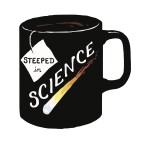 Genes are complicated! I feel like I’ve been waiting for this book to come out for a couple years. Well, I had no designs on John Parrington spefically writing this book. But I learned the basics of genetics a good long while ago, a study that, it was thought, came to a culmination (not an end, but a peak) with the Human Genome Project results in 2000. But since then there have been a great deal of caveats, new finding, things to make the picture seem much, much more complicated. And, since my interest in this is somewhat casual, I was losing a picture of how things worked. So along comes Parrington’s book, to summarize our current understanding, as incomplete as it is, of how genetics work.
Genes are complicated! I feel like I’ve been waiting for this book to come out for a couple years. Well, I had no designs on John Parrington spefically writing this book. But I learned the basics of genetics a good long while ago, a study that, it was thought, came to a culmination (not an end, but a peak) with the Human Genome Project results in 2000. But since then there have been a great deal of caveats, new finding, things to make the picture seem much, much more complicated. And, since my interest in this is somewhat casual, I was losing a picture of how things worked. So along comes Parrington’s book, to summarize our current understanding, as incomplete as it is, of how genetics work.
He focuses on the information that I, too, find fascinating: at first, we thought most of our genome was “junk”, wasted coding that did nothing. But recent results have indicated that all that junk actually does do something, that it’s not actually junk. Hence the title “How the Genome Lost Its Junk”. The key question is what makes a piece of DNA count as functional or junk. We thought that if it didn’t show up as coding for something specific, it must not do anything. But in the intervening 15 years, the field of epigenetics has become much more important. There are genes that turn off and on, or inhibit or enhance the expression of other genes. Our environment can affect how genes are expressed. And the 3D shape of all that DNA squished into the nucleus changes; where genes are in the nucleus can affect how they get expressed. In each cell nucleus, there’s enough DNA that it would stretch 2m if straightened out (the shape it’s in when we analyze it), so when it all gets squished in there, there are proximity rules that we don’t see in the standard analysis. PLUS, a large fraction of genes are what are called jumping genes, and they can move spontaneously around in our genes.
Woah! Whatever happened to the idea that a sequence of bases was just code for how to make some aspect of a human, and if we just code the key to the code, we could read DNA and say who that person will be? Of course, it was never that simple. Geneticists have always known it’s not that simple. That jumping genes thing was first proposed in the 1950s. The fact that hadn’t heard about it is just a symptom of not paying attention. But even for experts in the field, the picture has gotten quite a bit more complicated since 2000.
Parrington starts his story at the beginning, going through the history of the discovery of inheritance, then DNA and all the accompanying ideas and molecules. He tells the story and arrives at our current understanding in a thorough, step-by-step manner, making it clear without over-simplifying it. I really appreciated this approach. Genetics is a terminology-heavy field. Upon finishing the book, I saw there was a useful glossary at the end — I’d recommend looking at that first and keeping it handy. But just when I felt like things were getting a little too technical and I might need to take a break, he got to the end of the technical section and into the last few chapters, which are on the implications of what we now know.
These last few chapters are the most valuable of the book, but reading the first part of the book is necessary to understand them. He addresses (but of course cannot fully answer) some of the big questions wrapped up in genetics: what makes us human? where is individuality and consciousness? All in all, I loved this book. It answered a lot of my questions about the current status of genetic science. It’s not a chatty book — the author doesn’t insert himself as a character except in the introduction. It is brief — he accomplished all this in a couple hundred pages. The publisher sent me an early ebook version, so the formatting was a little weird and many of the figures were not functional, so I can’t really say how helpful they were. I’d recommend this to anyone who wants to fill in their understanding of genetics. It’s not an easy, breezy read, but I think it’s as straightforward as a thorough, honest explanation of this topic can get.


Leave a Comment
You must be logged in to post a comment.